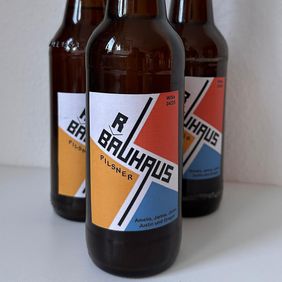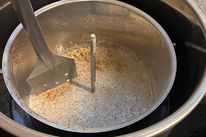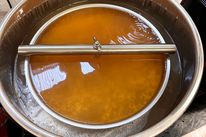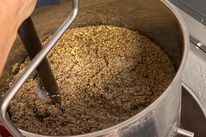Cheers! Brauhaus Pilsner
During the winter semester of 2024/25, a truly special brew was created as part of the module Measurement Technology in Waste and Wastewater Management. Four students Amelie Rüger, Janna Unger, Jennifer Blum, and Justin Kühn in their fifth bachelor semester report on their experience applying practical measurement methods through the process of brewing their own beer.
The foundation of a good beer is, of course, the right ingredients. In keeping with the German Beer Purity Law, we used only water, malt, hops, and yeast. The first step took some muscle, as the malt blend, consisting of barley malt and roasted caramel malt, had to be crushed by a hand-operated mil.
To convert the starch in the malt into sugar, we boiled the crushed malt with water. This process, known as mashing, took about 90 minutes. It was followed by the lautering, in which the spent grains (solid components) were separated from the liquid.
For the hop boiling, we selected three hop varieties from a wide range based on their aroma and taste (many varieties don’t smell particularly pleasant). Only a few grams were needed — much less than we had originally expected.
We then transferred the cooled wort into a fermenter and added the yeast. During the primary fermentation, we paid special attention to cleanliness and hygiene, as any contamination in the fermenter could introduce unwanted microorganisms and spoil the beer.
By measuring the original gravity of the wort daily, we were able to determine when the beer was ready for bottling. In our case, after nine days. During this time, the original gravity decreased from 12° Plato to just 4° Plato, indicating that the sugars had been converted into ethanol. At this point, the beer already had an alcohol content of about 5 %. The bottling was done manually using swing-top bottles. The result: about four crates of beer.
Of course, a shared tasting session was a must. We are very pleased with our beer. It has a mild yet interesting flavor. Since then, we have gained a greater appreciation for both beer and the entire brewing process. We’ll definitely seize the next opportunity to brew again.
By the way: the spent grains didn’t simply go to waste. As part of the module, we also conducted a biogas production test to examine the remaining gas potential of the brewing residues.




